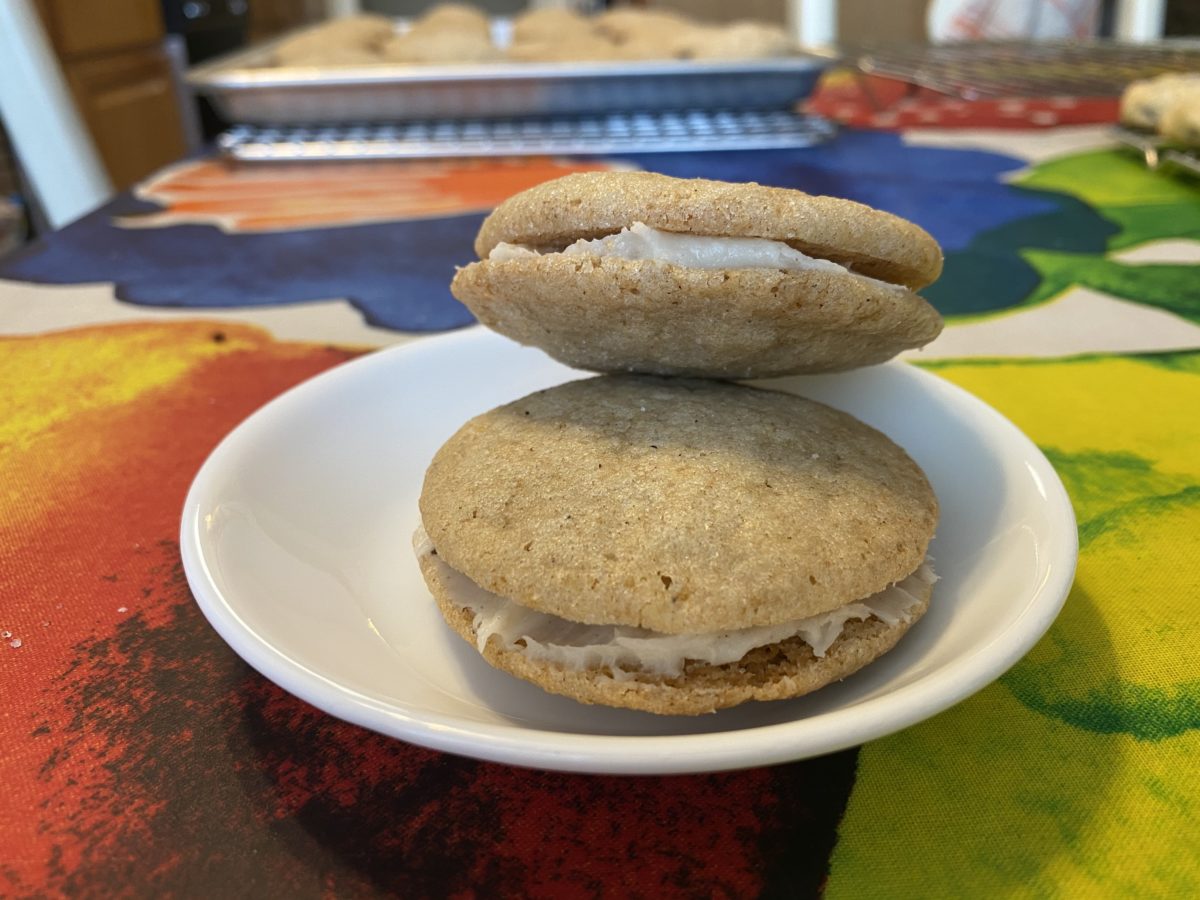Most sandwich cookies are poorly designed. The most common issue is that the filling oozes out when you try to bite into it because the cookie is too hard compared to the inside. With icing, this can lead to imbalanced bites, but ice cream fillings can leak everywhere. So with a healthy dose of skepticism, I took a shot at these Maple-Star Anise Sandwiched Cookies. With both maple syrup and star anise in both the sugar rolled cookies and the cream cheese filling, I had to know if these flavors worked together.
I only recently was gifted with a bag of star anise, and we first used it to make a Taiwanese braised pork rice bowl. Anise is one of the prominent flavors in black licorice, so it has both fans and haters. It also comes in whole, hard fruits, so to be incorporated into a cookie, it must also be ground to a powder.
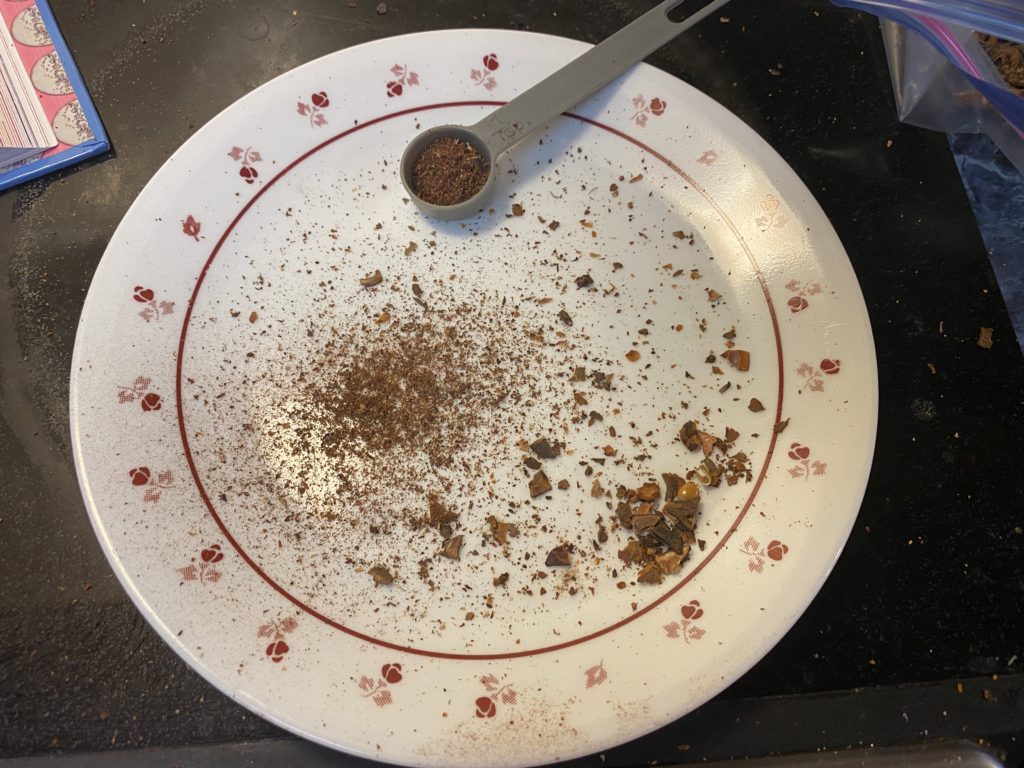
The dough itself came together very easily. Other than the star anise, it was quite straightforward to bear the sugar and butter, then eggs, then incorporate the dry ingredients. As usual, I missed some of the details due to sloppy reading: I incorporated a hot water warmed egg rather than a room temperature egg, but this and other details didn’t seem to make a big difference.
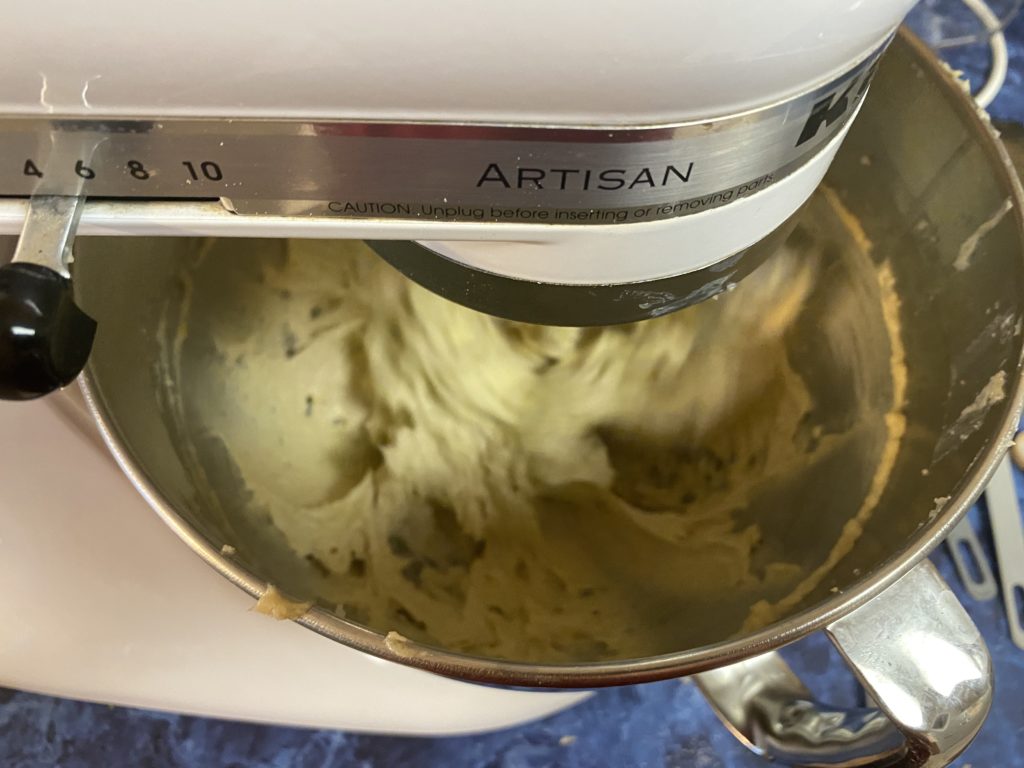
As I learned last time, I weighed the entire bowl and batter to calculate roughly 14 to 15 gram dough balls for easy separation. The dough balls got rolled smooth then dipped in granulated sugar before baking.
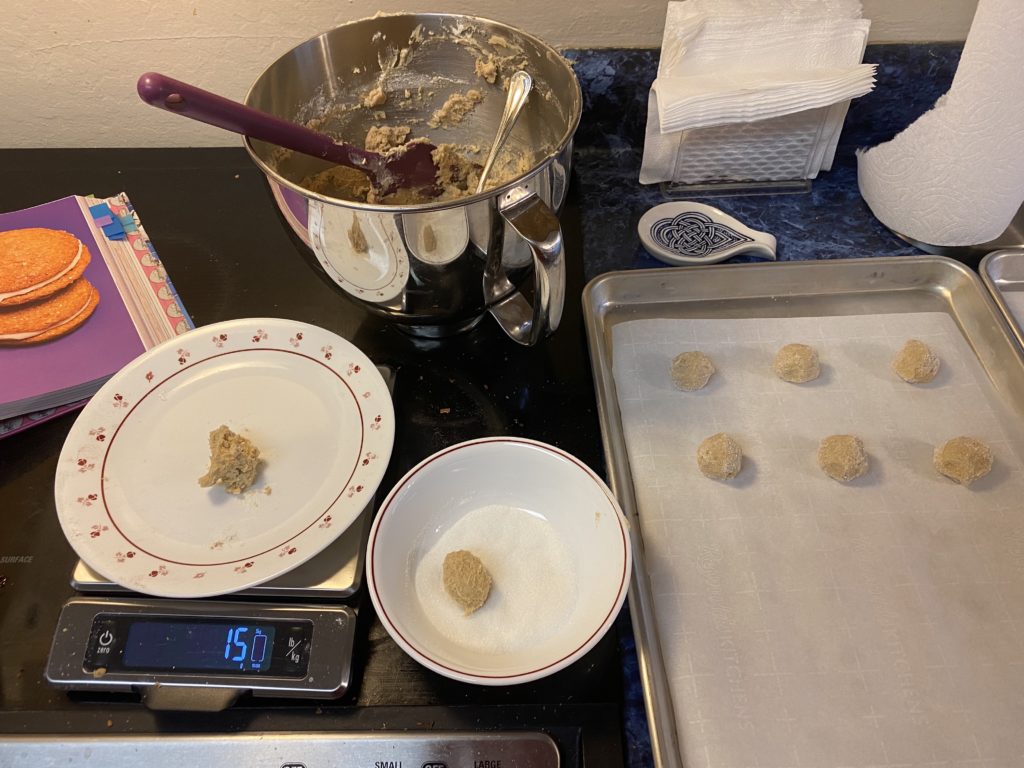
Despite the consistency in dough weight, the actual baked cookies varied much more in shape than I expected. Based on the position of the smaller (but taller) cookies in the middle, I suspect, that there’s a big difference in the heat of the oven between the middle and edges.
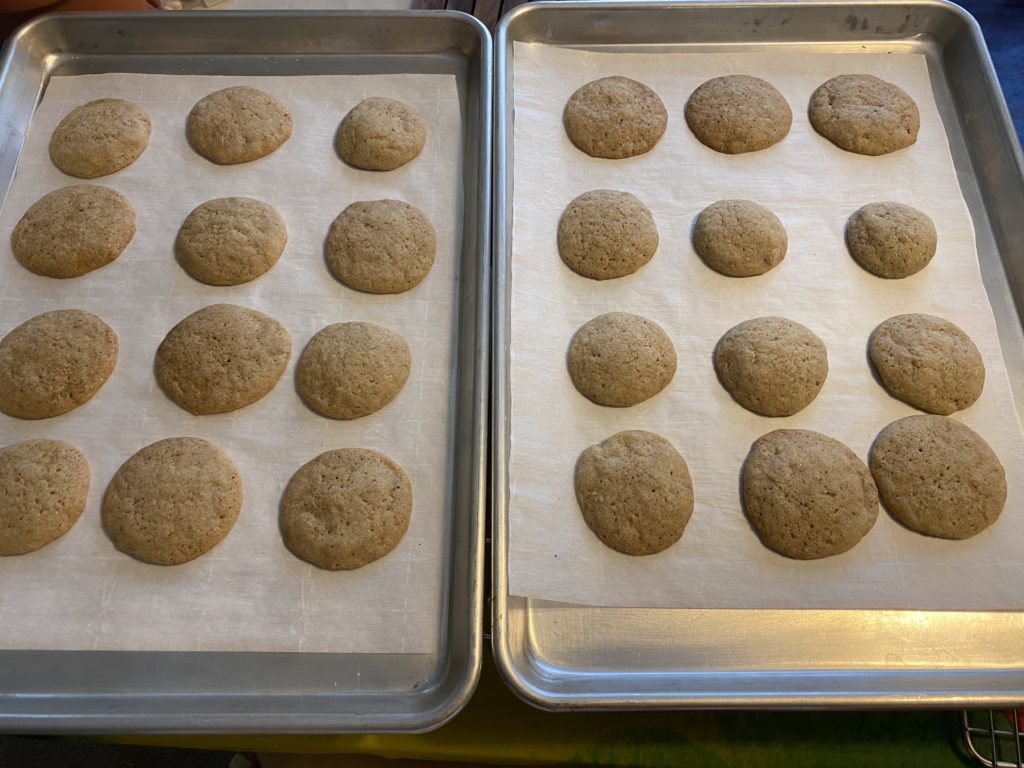
Regardless, Julie was happy to take on the task of matching pairs of cookies to its closest companion for equally sized sandwich halves.
While those were baking, I made the cream cheese frosting. I did remember to pull out the butter and cream cheese so they could come up to temperature, then incorporated the powdered sugar. I am always surprised by how the powdered sugar seems to disappear when worked into a liquid.
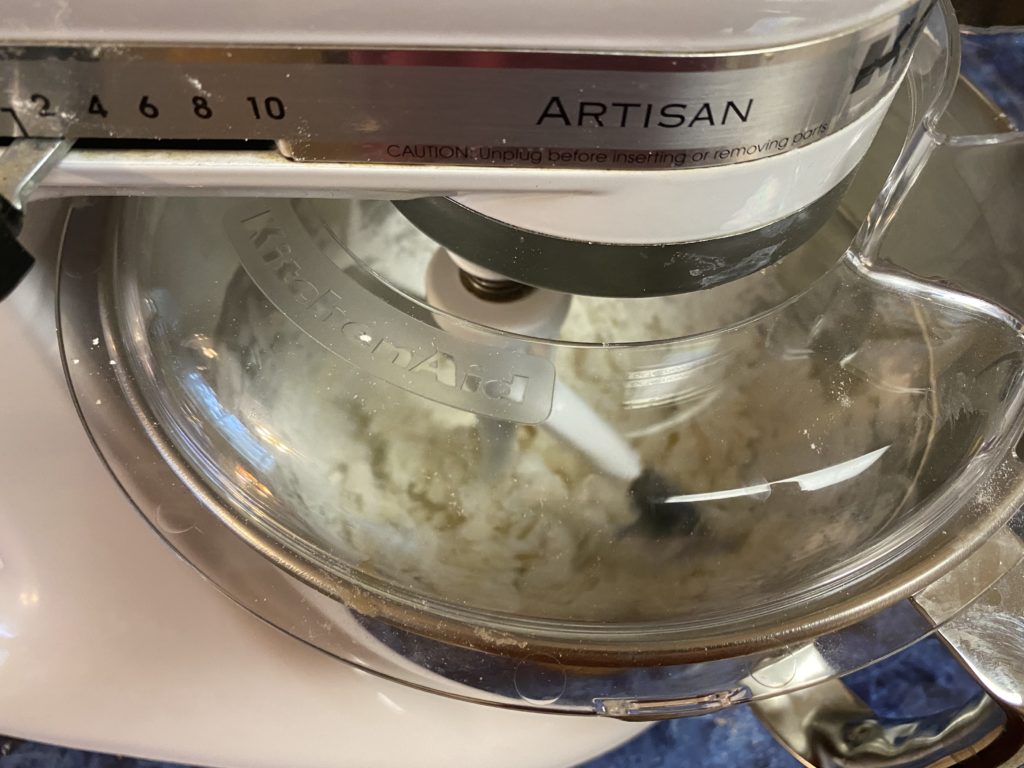
The last step was to spread the filling over the cookies. I did two passes to get enough in each sandwich and was reasonably proud of how I spread it out to make even cookies. I kept a little extra in the middle so it would squish out to the edges.
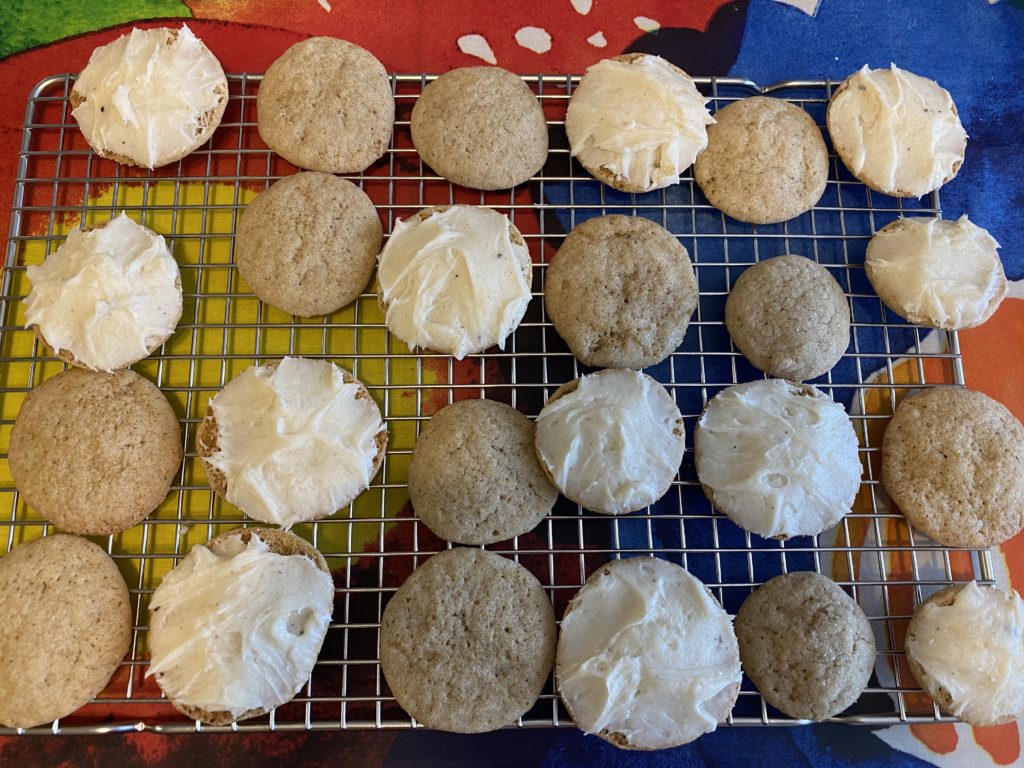
They tasted faintly of licorice on the first day, but the flavor came out even more on subsequent days. I’m not sure if I would have picked up on a maple flavor had I not known. The cookies themselves had a grainy quality that I presume was from being rolled in granulated sugar, but it was actually quite pleasant.
And the cookies remained both moist and tender so that they basically felt apart when either bites or broken into pieces.
If you want to make well-design sandwich cookies, you can find the recipe here.
